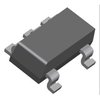-
The maximum input voltage that can be applied to the LT1761ES5-BYP#TRM is 15V, but it's recommended to operate within the specified input voltage range of 3.5V to 12V for optimal performance and reliability.
-
To ensure the stability of the output voltage, it's essential to follow the recommended layout and component selection guidelines, including the use of a suitable output capacitor, input capacitor, and feedback resistors. Additionally, the input voltage should be well-regulated and free of noise.
-
The LT1761ES5-BYP#TRM is rated for operation up to 125°C, but it's essential to consider the thermal management and derating of the device when operating at high temperatures. The device's power dissipation and junction temperature should be carefully monitored to ensure reliable operation.
-
The output voltage of the LT1761ES5-BYP#TRM can be calculated using the formula: VOUT = VREF x (1 + R1/R2), where VREF is the internal reference voltage (1.25V), R1 is the feedback resistor connected between the output and the feedback pin, and R2 is the feedback resistor connected between the feedback pin and ground.
-
The typical dropout voltage of the LT1761ES5-BYP#TRM is around 300mV, but it can vary depending on the input voltage, output current, and temperature. The dropout voltage is the minimum input-to-output voltage differential required for the device to maintain regulation.
 LT1761ES5-BYP#TRM datasheet
by Linear Technology
LT1761ES5-BYP#TRM datasheet
by Linear Technology